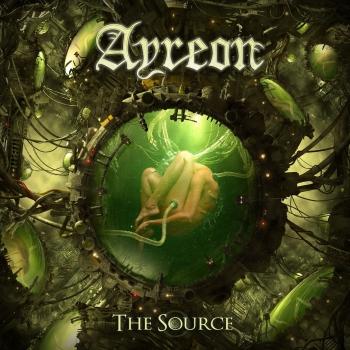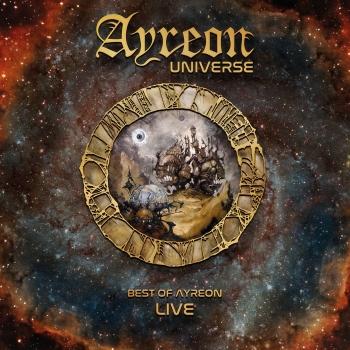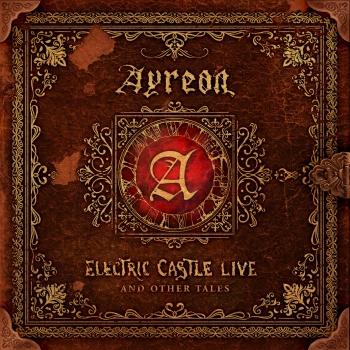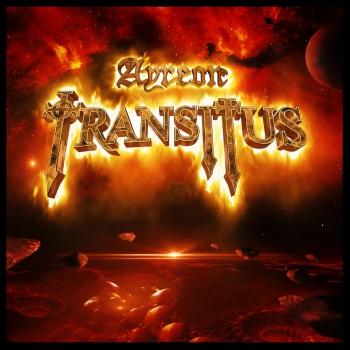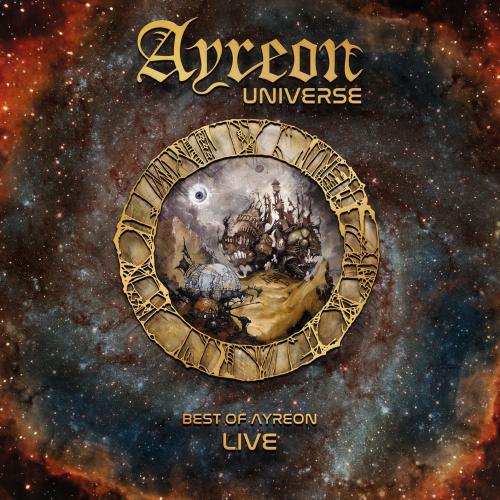
Ayreon Universe (Live) Ayreon
Album info
Album-Release:
2018
HRA-Release:
28.03.2018
Album including Album cover
- 1 Prologue 03:57
- 2 Dreamtime 02:31
- 3 Abbey Of Synn 04:16
- 4 River Of Time 03:58
- 5 The Blackboard 01:52
- 6 The Theory Of Everything 04:38
- 7 Merlin's Will 03:10
- 8 Waking Dreams 03:40
- 9 Dawn Of A Million Souls 05:08
- 10 Valley Of The Queens 02:50
- 11 Ride The Comet 03:41
- 12 Star Of Sirrah 05:56
- 13 Comatose 02:58
- 14 Loser 04:41
- 15 And The Druids Turned To Stone 04:42
- 16 The Two Gates 06:00
- 17 Into The Black Hole 06:11
- 18 Actual Fantasy 01:25
- 19 Computer Eyes 04:35
- 20 Magnetism 04:45
- 21 Age Of Shadows 04:48
- 22 Intergalactic Space Crusaders 05:33
- 23 Collision 03:36
- 24 Everybody Dies 05:01
- 25 The Castle Hall 06:30
- 26 Amazing Flight in Space 06:20
- 27 Day Eleven: Love 04:04
- 28 The Eye Of Ra 05:51
Info for Ayreon Universe (Live)
Ayreon Universe is the best of Ayreon Live - A unique performance featuring 16 singers, 28 songs, 2+ hour performance, 9000+ fans and a special appearance by Arjen Lucassen, captured by 30 cameras!
It's proof that you should never say 'never'. After creating rock operas in the studio for more than 20 years, prog mastermind Arjen Lucassen, aka Ayreon, finally took his Universe to the stage in September 2017. Three shows sold out within hours after announcing. 9000+ Fans from all corners of the world flocked to the 013 venue in Tilburg, the Netherlands to see this long-awaited show live.
This unique performance features 16 singers, 28 songs, an 8 piece band and a special appearance by Arjen, lasting over 2 hours. The concert was filmed with 30 cameras and is released on DVD and Blu-ray with 5.1 surround audio, with an extensive list of extras, including a behind-the-scenes documentary with interviews with every singer and musician, and a compilation of the try-out show performed a few weeks earlier.
Two years in the making, Ayreon Universe is a full on rock extravaganza, featuring songs from all Ayreon albums, including 2017's 'The Source', plus a few fan favorites from Star One. An amazing array of singers appeared on stage to bring the Ayreon Universe to life: Floor Jansen (Nightwish), Damian Wilson (Threshold), Hansi Kursch (Blind Guardian), Tommy Karevik (Kamelot), Anneke van Giersbergen (The Gentle Storm), Marco Hietala (Nightwish), Jonas Renkse (Katatonia), Mike Mills (Toehider), Marcela Bovio (Stream of Passion), Irene Jansen, Robert Soeterboek (Star One), John Jaycee Cuijpers (Praying Mantis), Edward Reekers (Kayak), Jay van Feggelen, Maggy Luyten (Nightmare) and Lisette van den Berg (Scarlet Stories).
This is the show every Ayreon fan has wanted to see and hear!
Produced by Arjen Anthony Lucassen
Arjen Anthony Lucassen
Best known for his musical project Ayreon, Arjen Anthony Lucassen was born on April 3rd, 1960 in The Hague. Both Arjen and his older brother Gjalt were good students, but unlike Gjalt, Arjen wasn’t interested much in studying. A notorious trouble-maker in class, Arjen decided to pursue a career in the music business after graduating high school. During his teens, Gjalt always teased Arjen a lot, and Arjen has been taking his revenge by playing jokes on his brother in the credits of his Ayreon CDs. If you look carefully, you’ll find a Gjalt ‘joke’ in the booklet of every CD released after 1995.
Arjen’s love of music was sparked in the 60s, when he became a big fan of the Beatles. He started buying albums in the early seventies when the glam rock era started and bands such as T-Rex, Alice Cooper, The Sweet, David Bowie were rising stars. Arjen really wanted to be in a band but he was too lazy to learn to play an instrument so he started a play-back band mimicking his heroes Alice Cooper, Slade, and The Sweet. He actually did get a lot of gigs in schools and already then he was a busy guy.
Then one day one of the older pupils approached Arjen saying “You have to listen to this,” and handed him a copy of Deep Purple’s ‘Made in Japan’. “Glam rock is OK, but this is really great.” When Arjen listened to it and heard Ritchie Blackmore’s guitar playing, he knew what he wanted: to play guitar! So he learned to play guitar and went through a stage where he had a lot of different bands until 1980. One of these bands was called ‘Mover’.
Bodine: Arjen had heard that the Dutch band Bodine had been looking for a new singer. Although he didn’t consider himself a great or gifted vocalist, Bodine was his favorite band so he wanted to get involved.
The first album with Jay van Feggelen on vocals was one of his favorite albums. He figured that he would audition as a vocalist, and bring his guitar, hoping they would give him the position of second guitarist in the band. And they told him that he had good ideas, good lyrics and good melodies but his voice was not what they were looking for. So Arjen told them he had brought his guitar. Those were the days of guitar tandems in bands such as Judas Priest, Iron Maiden, Thin Lizzy. Arjen pulled out his guitar and his amps and just began to play some Bodine songs that he had been working on for a month. And they said: Ok, you’re in! Arjen stayed in Bodine from 1980 to 1984 and did two albums with them: ‘Bold as Brass’ and ‘Three Time Running’.
Vengeance: Then Arjen got a call from a young and fresh band named Vengeance asking him if he knew a guitarplayer. Arjen thought just a moment, thinking about how great Bodine was, and what amazing things he had learned from the older much more experienced musicians, but also how limited he felt about expressing his own musical ideas. He couldn’t develop himself as a composer and realized that there was a lot of spirit in Vengeance. So Arjen answered: “Yes, I know a guitarplayer… me!”
Vengeance was surprised and very happy, but wondered about his commitment to Bodine. Arjen told them that it was time for a change. He joined Vengeance shortly after that phone call and considers the time with them great, wild and quite enjoyable. He had more freedom to do what he wanted and to compose songs. But still, he had to make concessions since he was in a band and also had to deal with record companies demands. Not every band member agreed on his ideas, which made sense given the fact that they all hailed from different musical backgrounds. In 1989 the band replaced singer Leon Goewie with English native Ian Parry, but the band had a hard time getting a new style off the ground. In the early nineties the grunge and alternative rock genre exploded on to the scene. Arjen wished to go into a Rainbow direction with keyboards and bombastic sounds, and other guys wanted to explore Bad Company or Thin Lizzy styles. Because of this they wondered what the audience wanted to hear and started to write songs to please the fans. That was a bad decision. After a very successful farewell tour in 1992 Arjen parted ways with Vengeance.
Striking out alone! Now the road was open for Arjen to work on his own material without interference or having to make concessions to band members. He recorded a few songs with himself on vocals and a record company heard it and was very interested to release the songs on an album. This album became Pools of Sorrow, Waves of Joy and Arjen went by his middle name Anthony. On this album Arjen played all instruments himself, except bass guitar which was played by Peter Vink and keyboards which were played by Cleem Determeijer. He didn’t know what he wanted to do musically so the album became a hodge-podge of styles. Country, pop, rock, prog all sorts of different songs, and, even though three singles were released and Arjen performed on various radio shows and small clubs, the album flopped. But to those who listen to the album can hear that there are a few songs that became the basis for a massive project that was still to come.
He was looking for a way to make a life-long dream come true of creating a rock opera.
Ayreon: One particular album released during the 60s left a huge impression on Arjen. The album had everything Arjen was looking for: the music took him on an adventure, lyrics drew him into an emotional story, and reading lyrics along to discover that famous vocalists were playing parts. It became the ultimate tool for escapism for Arjen. The album was Andrew Lloyd Webber’s Jesus Christ Superstar. This album was followed by other similar albums such as War of the Worlds featuring Phil Lynott, The Who’s Tommy, Pink Floyd The Wall. After that Arjen realized that time had come to do it himself, and to do it his own way. Not limited music to one style. He used all his styles — prog, metal, folk, Beatles — despite being convinced that listeners with strong genre preferences would hate not being able to pigeonhole the music. But that didn’t matter to Arjen: for once in his life he wanted to make an album without compromises, just making the music he loved. This album became Ayreon – The Final Experiment. He found a small Dutch label interested in the project and the album simply took off. Several years later, after changing record companies, Arjen has released seven Ayreon albums as well as one compilation.
This album contains no booklet.










